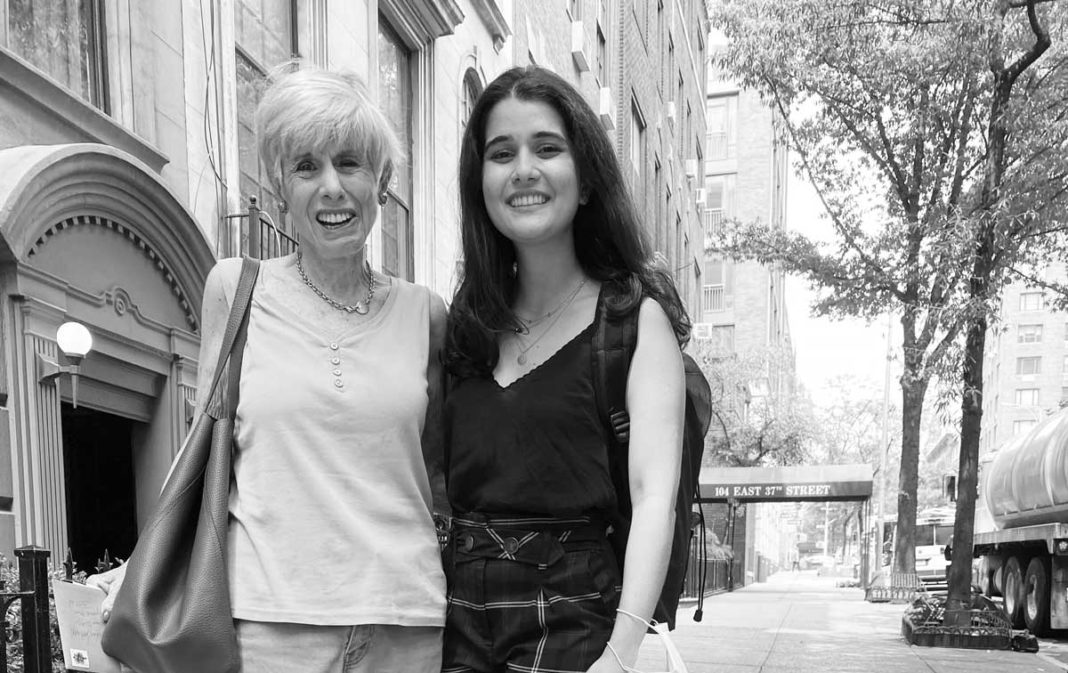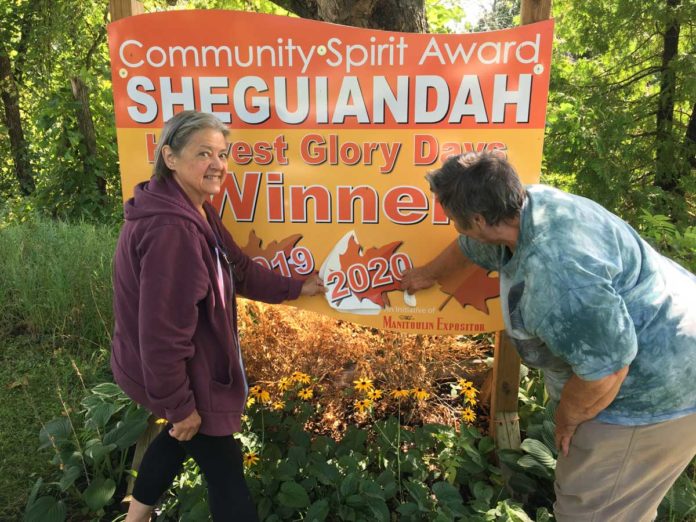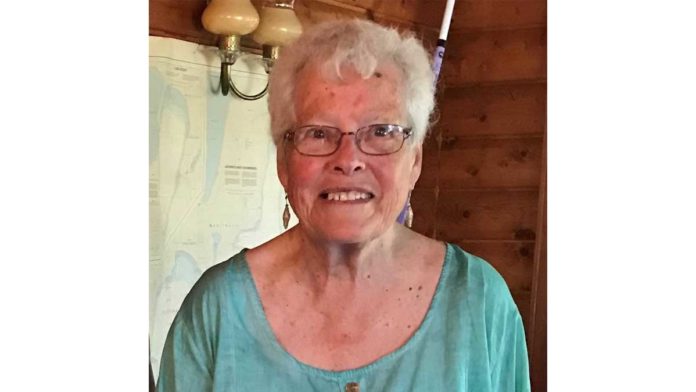by Bonnie Kogos
September 11 started for me with a phone call from Sudbury. I smiled, hearing my friend Brenda from Garson.
“What do I owe this honour?” I laughed. “I’m just finishing a newspaper column about Manitoulin before I go to work.”
She shouted, “Are you okay? One of the Twin Towers has just been bombed; I saw it on TV!”
“What?” Sickened, I turned on the TV. Oh God, I was hoping Jonathan was not home. My dear cousin, accomplished, charming, tall, handsome Jonathan Uman, 33, who worked for Cantor Fitzgerald on the 102nd floor, was still on vacation with his family. Phew.
I immediately called his mother, Susan, who sobbed, “Bonnie, they came home a day early. Got back last night. Jon drove his new sports car into work early this morning, exercised, and went to his office!”
Thus began the excruciating torment, felt by our country, Canada and Europe as the news roared around the world.
Ten minutes later, the second tower blew up. I was able to phone my office: “Stay there. Do not move. The city is on lockdown.”
Crying, I sat in front of the TV with my thoughts of Jon, his dear wife and two young children, his mother, our family. As our nation sat numb and in disbelief, ambulances and firetrucks began to scream, roaring past my home near Park Avenue. All day.
An hour later, I was startled to receive a phone call from someone at CBC Radio in Sudbury. They knew me because I’d been writing for years the Window Seat column for The Sudbury Star, about the joys of constantly discovering more about Sudbury and especially on Manitoulin, where I had lived for a brief time in Kagawong. I loved Manitoulin and as a city gal, had kept making mistakes like putting my pickup in a frozen ditch on Boxing Day, constant learning how to live here as a former New York City-based travel agent and writer.
Also, since writing the column, I’d been interviewed often by dear Markus Schwabe on CBC, so they had my New York City phone number
“Bonnie, you’re our New Yorker who often visits Sudbury. Are you safe, and can we talk?”
It was pitiful as I continued to share, intermittently through the terrifying day, as we waited and watched billowing smoke darken our sunlit skies. On TV, we watched the fallen buildings with their now ugly girders and columns. Everyone, who could, rushed down to help.
Just the night before, my friend Susan, who’d been to a fancy dinner the night before at Windows on The World was mortified…
Two miles away, in Murray Hill, away from “Ground Zero,” I simply shared the anguish hitting us, deepening my association with my cherished readers in Sudbury and on Manitoulin.
In the late afternoon, I couldn’t stay in. I had to move, walking out to Park Avenue to watch hundreds of people miserably trudge by, all in disbelief, many with shoes in their hands, since the subways had closed down. And the sun was shining.
The next day I stood in line in front of the hospital, waiting to file a missing person’s report for Jon. As if that would help. Relatives of other families, numbering in the thousands, lined up as well.
A woman in front of me told me her daughter phoned, as the smoke filled her office, and the phone went dead. We cried together.
The misery, not knowing, and the terror, did not abate for days. We heard nothing. Everything seemed to stop. New York City was tortured, and we were still living.
More moments of deep misery; the excellent travel agency I was associated with had just issued 200 tickets for a meeting the following week in Arizona for our cherished clients, the very staff of Cantor Fitzgerald, who were on the 101 and 102nd floors. Loretta, the agent, sat crying, as she voided out each ticket.
Later, Jon’s body was identified. Loved by so many, at his funeral at home in Connecticut, 100 people showed up to honour him. He had played guitar in a band and there was music for him.
I dreamt of him often and still do. The terror he must have felt that day is beyond my wildest imagination.
A week later my cousin, Lisa, flew in from California; we were able to walk down to the site, looking up at wretchedly torn steel girders and columns above and grey powder everywhere. Policemen kindly said, “Please move along, folks…”
The city stopped, peculiarly quiet, hopeless and numb. Everyone was in mourning, even with store windows reflecting this. Our busy travel business simply stopped. It was a time of waiting, pure desolation, and utter sadness.
It seemed everyone had family or a friend who had died that day. It was worse than the way I’ve written this.
Yet our tragedy-stricken country pulled together beautifully. No division. People stood together, helped each other, and we loved America.
I pulled many photographs of Jon, remembering his sunny smile and gracious ways.
Even now, 20 years later, deep grieving and mourning resides inside every single New Yorker who was here, and lived. And it is a loss that tragically binds many nations. Canadians were wonderful, coming to help.
A few weeks ago, I and my dear nephew, Eric Beckman, who looked up to his cousin Jon, visited the incredible, extensive Ground Zero Memorial, where thousands of artifacts are brilliantly displayed. We remembered everything, and gazed at Jon’s cheerful picture, among the thousands who perished that day.
“Aunt Bonnie, everybody has a memory; it is seared into all of us,” Eric said brilliantly.
We were there for hours, allowing in the pain and disbelief again. Standing by the reflecting pool, looking up, we again realized the huge perspective, how massive these buildings were.
It’s still impossible to imagine the thousands of people that perished that day as we stood quietly, down in the museum, realizing the huge footprint of both buildings and the areas.
NYC put up bright new buildings and sites, allowing downtown NYC to flourish again, with respectful visitors and residents always congregating here. When my friends from Sudbury and Manitoulin visit me, we find ourselves here.
With September 11th, the dull pain of remembering always returns. Allowing us to acknowledge and honour the firefighters, police, and volunteers who worked tirelessly, endlessly, and how we all pulled together. The heroic stories of people helping others to survive are still with us.
We’re all aware how much NYC and the world has changed, drastically; culture, political division, the pandemic and the unceasing and endless conflict in the world.
Our Mayor Di Blasio said, “There’s no way to understand this, unless you’re in it.”
This September’s intense sadness is deepened with the heaviness of the new waves of the global pandemic that New Yorkers feel, the recent torrential rains around our country, and the fires in the west. And with political issues, admittedly, things are tough everywhere.
Everything seems instant these days, with cell phones, computers, television news, and Zoom. An elder business friend, whom I respect, told me how successful and relevant he felt as a busy engineer, until 2018. Now grumpy, he asserts, “These days, what is the real world and how do we live in it? Not phony movies, Tik-Tok, or stupid games to fill the time.”
I recall a comment made by Albert Einstein; “I fear the day that technology will surpass our human interaction. The world may have a generation of idiots.”
And if our electrical power dies, how do we function in our ever-changing world?
How can we Americans bring our country together? Even gladly visiting Manitoulin this week, I keep asking how do we stay “safe” anywhere, existing in a more difficult world?
Our American leaders constantly speak on TV to those in our population who have not been immunized.
I’ve been in NYC since the beginning of the pandemic, getting my two shots, amassing face masks and gloves. Early on, when I bought groceries, I washed them in the bathtub, yet gave that up as the months went on.
“New York City’s lost its shine,” mourned my friend Rita, visiting two weeks ago from her home in Florida. “All the empty store fronts, and homeless on the streets. The US is polarized, and the global economy struggles.”
Many Americans grapple with what we were raised to believe – we were proud to be from the US of A. That pride carried us in our travels around the world and helped us navigate the challenges we faced as a country.
The “Manhattan-Manitoulin me,” who lived in that timeworn Kagawong farmhouse so long ago, and who has visited Sudbury and Manitoulin every summer for 30 years (except for 2020), is grateful to be here at this writing.
And happy to report that Jon’s daughter and son have grown up, leading their lives. They have bloomed.
We Americans and Canadians are tough and resilient, as we work, strive for health, and well-being.
Now to be respectful, civil, and grateful for all the good and blessings we have.
I’m going to walk the path around Bridal Veil Falls.
Our Bonnie’s first book, ‘Manitoulin Adventures: I Was Mistaken for a Rich, Red, Ripe Tomato,’ was published in 2001. Her second novel, Manhattan, Manitoulin, published by Scrivener Press, and her third, The Boat That Brings You Home, begins on the dock in Gore Bay. Find her at BonniKogos@gmail.com





